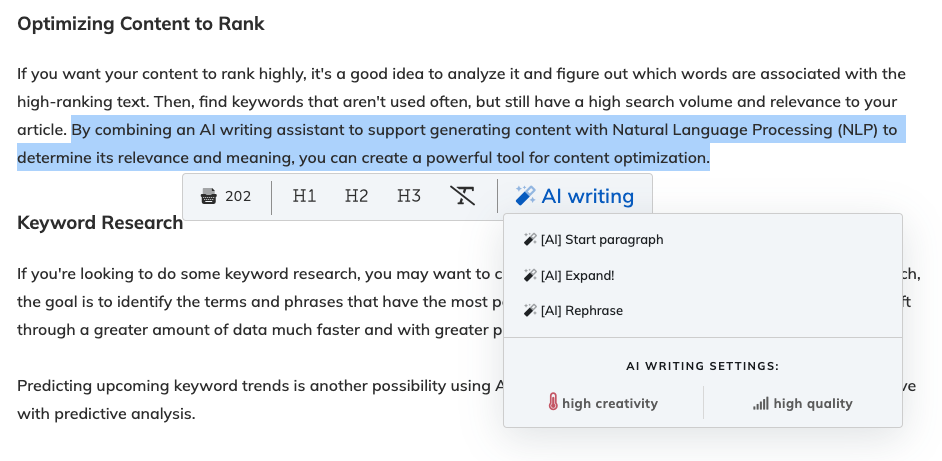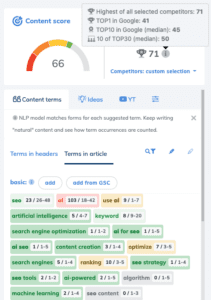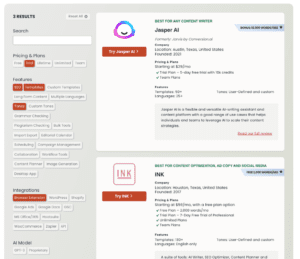Last updated on December 28th, 2022
Last Writer is 100% reader supported and a portion of our revenue is earned through affiliate programs. If you click a link and make a purchase we may receive a small commission at no additional cost to you. Your support helps us continue to create the best content that we can, thank you! Learn more
AI writers are getting more and more popular. The AI copywriting tools are not just a novelty but can make the entire process of content writing and publishing much easier and faster for us.
Many AI-based tools can help with the publishing process, too. These tools can make it faster and easier to share content on social media channels and help with content optimization and scheduling. AI-based tools can assist with curating content for search engines too.
Introducing GPT-3: What is it and why you should care
If you’ve been keeping up with the latest in artificial intelligence (AI), you’ve probably heard of GPT-3. GPT-3 is the latest in a line of machine learning models known as “Generative Pretrained Transformers” or GPTs, a type of autoregressive language model that uses deep learning. Autoregressive language models are trained on the standard modeling task: guess the next word having read all the previous ones.
OpenAI, a San Francisco-based AI research laboratory, announced the first public beta of its GPT-3’s API in June 2020. GPT-3 is a significant improvement over its predecessor, GPT-2. While it was a groundbreaking model that showed the potential of Natural Language Processing (NLP) models trained on large amounts of data, GPT-2 had some limitations, such as a lack of flexibility and poor performance when given specialized tasks, and when doing text summarization.
GPT-3 addresses these limitations and more, being trained using 175 billion parameters, which is more than 100 times the number used in training GPT-2 (1.5 billion). It is a much more flexible model that can be trained for a broader range of tasks in the Natural Language Generation NLG and Natural Language Understanding (NLU) spaces.
One of the most exciting aspects of GPT-3 is its potential for applications in human-computer interaction (HCI). GPT-3 can be used to generate natural language responses to questions, making it possible to build interactive chatbots and other applications.
Additionally, GPT-3 can be used to generate text in real-time, making it possible to create text-based applications such as question-answering systems.
GPT-3 is still in its early stages, but it has already shown great promise.
GPT-3 tools to help speed up your process
If you’re like me, you’re always looking for ways to optimize your workflow and get things done faster as a content creator. Luckily, there are a ton of great tools out there that can help with that. I’ll share two of my favorite GPT-3 tools that have helped me speed up my process.
NeuronWriter
NeuronWriter is a tool that combines both a GPT-3 powered writing assistant with an NLP model that matches content for given keywords or topics and suggests terms that could help your article rank.
The workflow is fairly linear to get going with a new document. You start with some keywords, or an article title like I often do. It then slurps the SERPs (Search Engine Results Pages) and lets you choose which of the top results to feed into its NLP to extract ranking content terms and phrases. It defaults to using all of the Top 10 results (a logical choice!), but you can remove any that aren’t closely related to your topic or are brand pages, and optionally add others from the Top 30 that might be better suited.
As you write, you can select text or heading and ask the AI assistant to “Start paragraph”, “Expand!” or “Rephrase” in a range of creativity levels, and in “high” or “lower” quality (which affects the number of your plan’s AI credits used).




You can then monitor your “Content score” in real-time as you’re writing, and even see how you are doing compared to your competitors’ best and top median. It even tracks a Readability Score and how yours compares to top-ranking articles, along with a word count comparison.
Also useful is the Ideas tab, which lists top-ranking questions, and H1/H2/H3 headers that might make good additions if you get stuck. Finally, with built-in plagiarism checking (via PlagiaShield) you can do a final check to make sure your writing (including any AI writing!) is unique.
OpenAI
Seeing how most (but not all) AI writing software is using the GPT-3 model API from OpenAI, sometimes I like to experiment and use it directly myself too, sidestepping the canned templates provided by other tools and writing direct prompts.
The pricing is very low too with a pay-as-you-go model instead of monthly/annual plans. Currently, when you start a new account you get $18 of credit to use in your first 3 months. I feel like I’ve used the API quite a bit and somehow my usage so far is only 81 cents! So if you are needing bulk or long-form content, and you aren’t allergic to developer documentation and can tailor some examples, it is a great value.
How to get started with GPT-3


Those are just two of the best GPT-3 tools out there that can help you speed up your process. If you’re looking to optimize your workflow, I highly recommend taking a look through our ever-growing AI Writing Assistant Directory, where you can search and filter on plan types, features, and 3rd-party integrations to find a tool that best fits your needs and use cases.
Why GPT-3 is the future of productivity tools
In just a few short years, GPT-3 has revolutionized the productivity tool and writing assistant landscape. This series of GPT-n AI models from OpenAI will almost certainly be part of the future of productivity tools for several reasons.
First, GPT-3 and its API, along with many of the tools built on it are incredibly user-friendly. They’re designed to be used by anyone, regardless of their level of technical expertise. This makes it ideal for small businesses and individual users who don’t have the time or resources to invest in more complex tools and systems.
Second, GPT-3 is extremely versatile. It can be used for a wide range of writing tasks, from simple spelling checking to complex language translation and full-text summarization. This versatility makes it an essential tool for any productivity-minded individual.
Third, GPT-3 is constantly evolving. The team behind this tool is constantly adding new features and functionality, making it even more powerful and user-friendly. This makes GPT-3 a technology that will only become more valuable over time.
Fourth, access to the GPT-3 model via OpenAI’s API is affordable, with prices dropping over time, making it a great value for the money. Their engineers continue to make the models more efficient to run, which has reduced the expense to serve them.
Finally, there is a growing community of users, companies, and developers who are passionate about this tool and its potential. OpenAI is valued at almost $20 Billion and is in talks with Microsoft for additional funding, having already invested $1 billion in the group three years ago. OpenAI has even started its own $100 million investment fund to help bootstrap other AI companies: OpenAI Startup Fund.




